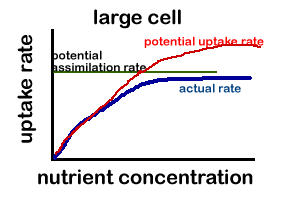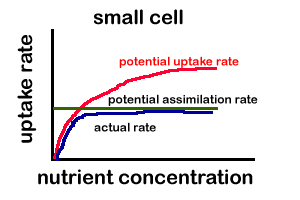Nutrient uptake and assimilation are two processes in series.
Nutrient uptake across the cell wall and membrane depends on the kinetic parameters of the porter sites and the number of porter sites in the membrane.
Cells with more surface area can take up nutrient faster.
Cells with more volume for internal processes of assimilation (biosynthesis and supporting respiration) will be able to grow faster.
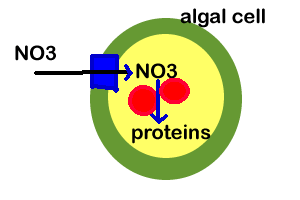
Considering just the kinetic paramters of the transport site, Ks and Vmax:
A higher Vmax will increase uptake at all concentrations.
Cells can increase the Vmax by having more porter sites in the membrane or more total membrane.
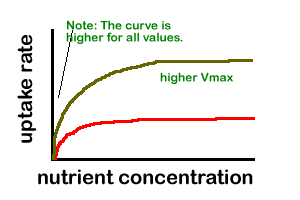
A lower Ks will increase the affinity, and thus increase uptake rate when the concentration is low.
The Ks is determined by the structure of the transport protein (which is genetically determined). Cells can't change the Ks unless they have multiple uptake proteins.
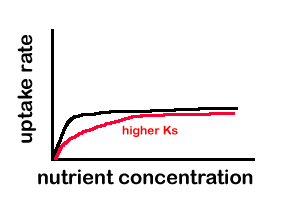
Just based on kinetics, you could have two species compete that have different combinations of Vmax and Ks.
Species A: high Vmax and high (unfavorable) Ks
Species B: lower Vmax and lower (favorable) Ks
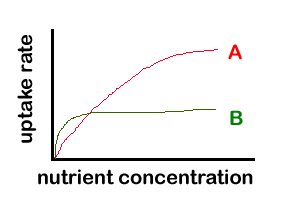
Considering the cell volume and surface area:
There are two processes in series and either can be limited.
A simple conceptual model for this can be describe as:
the uptake rate can be limited by the cell surface area
the growth rate can be limited by the internal volume of ribosomes and biosynthetic machinery
